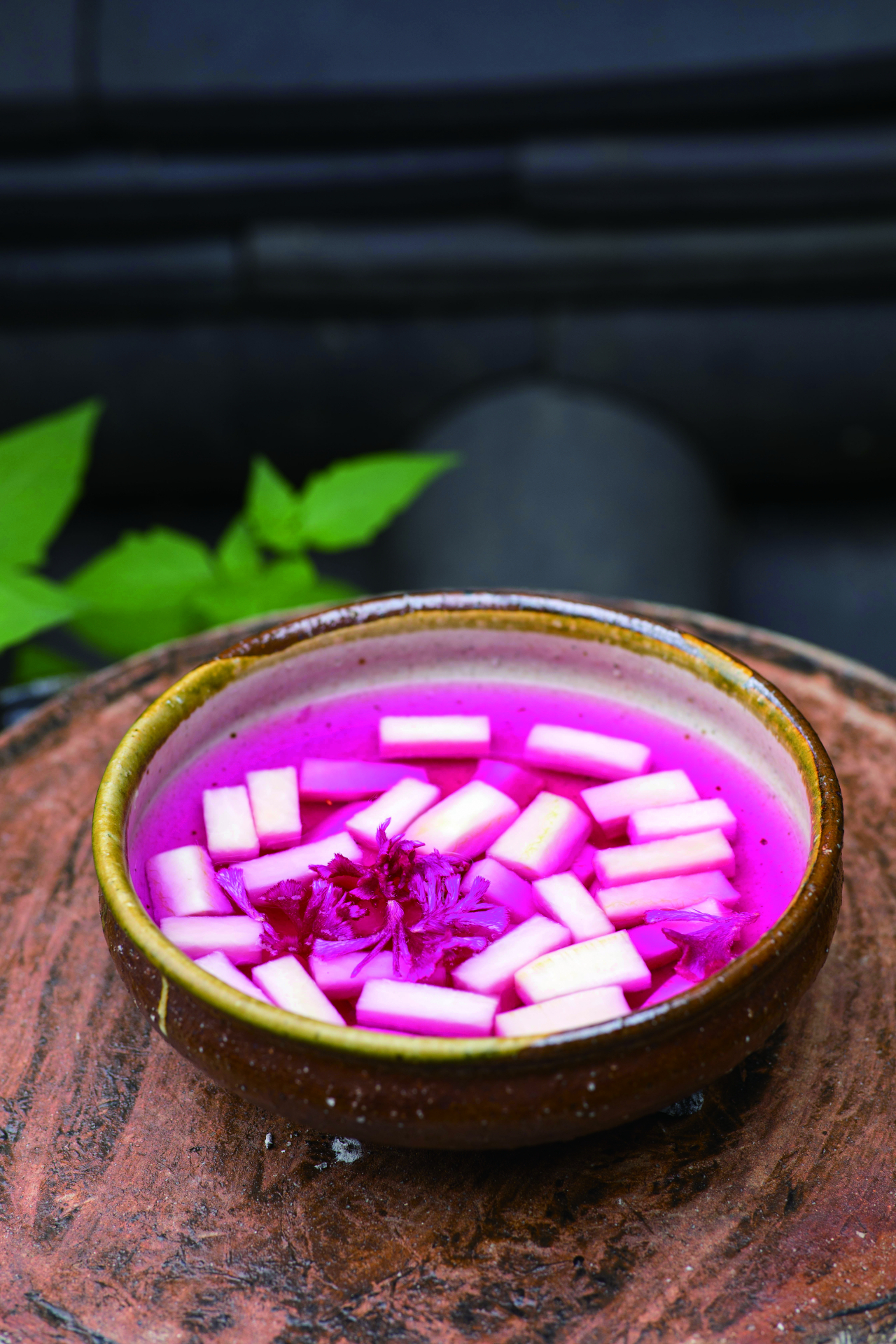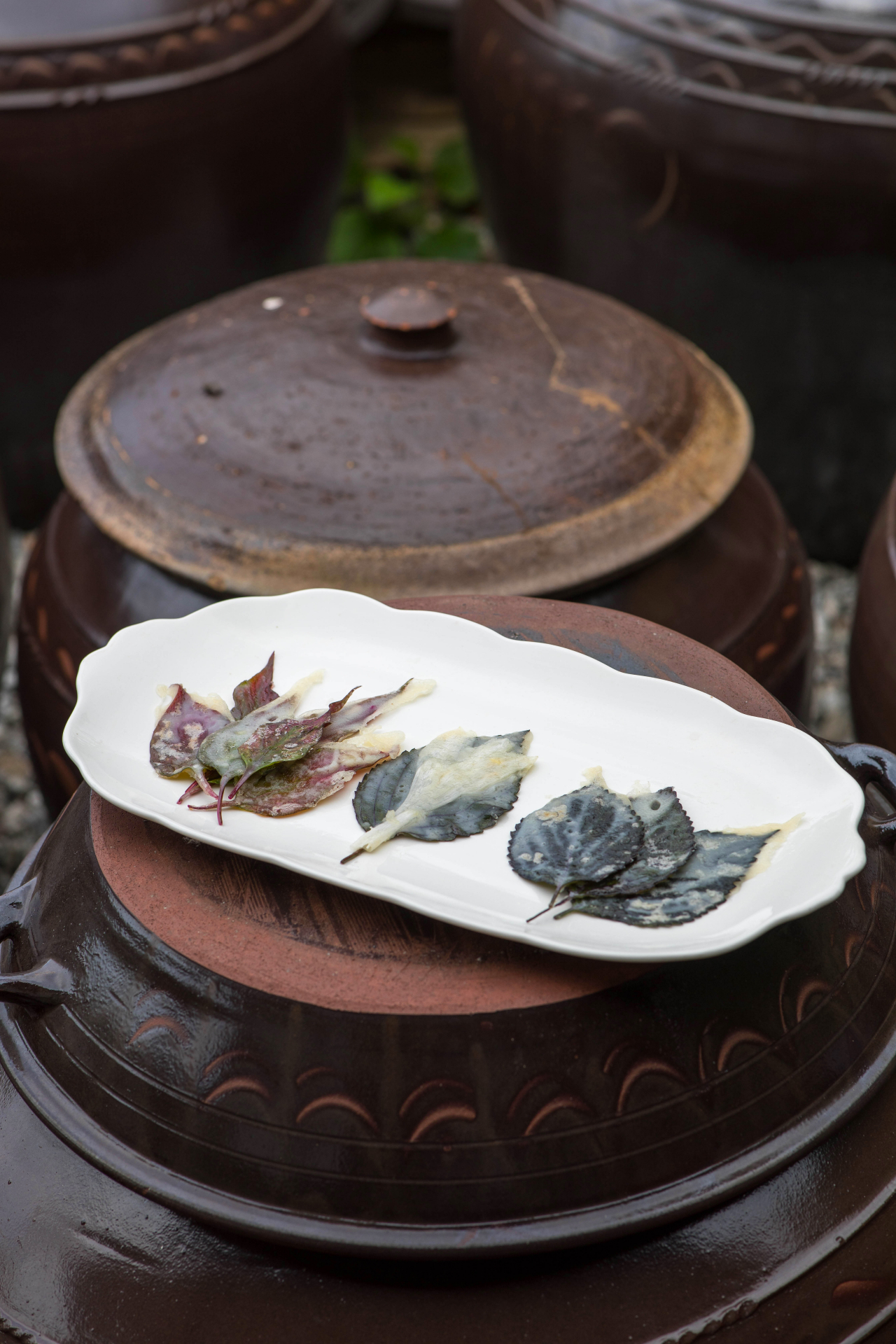Having entered the monastic community in 1980 at Sinheungsa Temple in Hwaseong, Gyeonggi Province, under the tutelage of Venerable Seongil, Ven. Seonjae showed remarkable talent in preparing temple food early on, thanks to her “magic hands” inherited from her grandmother. Ven. Seonjae’s health declined for a while due to hepatic cirrhosis, but she was healed through food.
After this personal experience which confirmed for her the medicinal quality of temple food, she took action to popularize temple food.
She has lectured on temple food in Korea, and taught at renowned international culinary schools like Le Cordon Bleu.
Noted chefs from abroad have visited her to learn about temple food. When she was offered a job with the Korean Food Promotion Institute, she spent a long time considering the offer first but then ultimately accepted because she hoped more people would become healthier through her promotion of Korean food and dietary culture far and wide.
“What we eat produces reactions in our body and mind. When sick people come to me, I first ask them to write down what they enjoy eating in daily life. Most of them eat meat or meat products, processed foods and carbonated drinks, and men usually include alcoholic beverages too. Salty, spicy and sweet foods usually dominate. Our food choices reveal how we live. What we eat today determines what we are tomorrow.”
 |
(Cultural Corps of Korean Buddhism) |
Cockscomb water kimchi
Containing ample vitamin B, copper, iron, zinc and calcium, cockscomb is usually made into tea, but at temples they make good water kimchi. This kimchi is not very common, and because of its beautiful color, it is said that people first eat it with their eyes and then with their mouth.
Ingredients
- 1 white radish
- 2 cockscomb flowers
- salt
- veggie stock (kelp, dried mushrooms, tree of heaven shoots, etc.)
Directions
1. Clean white radish, cut into thin rectangles, and sprinkle with salt.
2. Make vegetable stock by boiling the listed ingredients in water. Let cool.
3. When white radish pieces are softened, add the vegetable stock. Add cleaned cockscombs to infuse color.
4. Add salt if needed.
 |
(Cultural Corps of Korean Buddhism) |
Plantain lily, red perilla and cockscomb leaf jeon
Autumn is the time for plantain lily jeon and cockscomb jeon. Red perilla is known to relieve insomnia and depression, so if you add red perilla to these dishes, you have a fall table that is brightening your body and looks beautiful as well.
Ingredients
- 10 plantain lilies
- 10 red perilla leaves
- 10 cockscomb leaves
- 4 tbsp flour
- 6 tbsp water
- a little salt and grapeseed oil
Directions
1. Clean plantain lilies, red perilla leaves and cockscomb leaves, and let drain.
2. Make batter by mixing flour, salt and water.
3. Oil a pan with grapeseed oil. Coat each ingredient with the batter, and fry until golden brown on both sides.
Provided by Cultural Corps of Korean Buddhism
-------------------------------------------------------------------
Temple food is food of the ascetics who express gratitude for all forms of life and wish for peace all around the world. The Cultural Corps of Korean Buddhism operates the Korean Temple Food Center where guests can learn and experience temple food. -- Ed.







